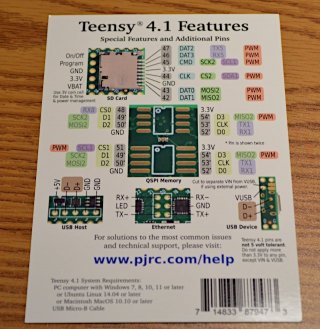DonFredriko
Member
Hello,
I want to use pin 53 as a PWM output on the back side of the Teensy 4.1 (I use all other pins, so changing is not an option). This should be possible according to the pinout reference card. But it doesn't work.
In C:\Program Files (x86)\Arduino\hardware\teensy\avr\cores\teensy4\pins_arduino.h, line 112, I find:
#define digitalPinHasPWM(p) ((p) <= 15 || (p) == 18 || (p) == 19 || ((p) >= 22 && (p) <= 25) || ((p) >= 28 && (p) <= 31) || (p) == 33)
So pin 53 is not there. My question is if this is a mistake on the pinout reference card, or in the line above.
If pin 53 has PWM, is there a way to enable it?
Thanks!
I want to use pin 53 as a PWM output on the back side of the Teensy 4.1 (I use all other pins, so changing is not an option). This should be possible according to the pinout reference card. But it doesn't work.
In C:\Program Files (x86)\Arduino\hardware\teensy\avr\cores\teensy4\pins_arduino.h, line 112, I find:
#define digitalPinHasPWM(p) ((p) <= 15 || (p) == 18 || (p) == 19 || ((p) >= 22 && (p) <= 25) || ((p) >= 28 && (p) <= 31) || (p) == 33)
So pin 53 is not there. My question is if this is a mistake on the pinout reference card, or in the line above.
If pin 53 has PWM, is there a way to enable it?
Thanks!



